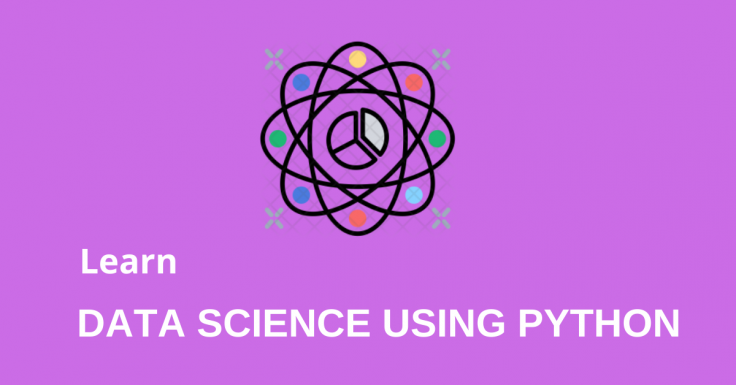Top 5 Data Science Trends for 2020
As Data Science continues to expand into the next decade, this article features five important trends in the field that are expected in 2020. Leverage these trends to help improve your business processes for maximizing growth.

Technology is evolving continuously, and so are we. In the upcoming years, there will be massive growth in the AI and Machine Learning field. There is already a considerable amount of data to be managed, and with new technological advancements, we can utilize big data in many ways. For that, we have to stay up to date with the latest trends in data science.
Data Science is not a single term; it covers a variety of topics and networks, such as the Internet of Things, Deep Learning, AI, etc. In simple terms, we can count data science as a complete blend of data inference, algorithm computation, analysis, and technology that helps in solving multifaceted business problems.
Moreover, it provides businesses with advanced tools and technologies that allow them to automate complicated business processes linked with extracting, analyzing, and presenting raw data. With so much happening in the technical field, and the data being generated at a rapid speed, it is crucial to know about the latest as well as the upcoming trends in data science.
To keep you up-to-date with the trends in data science, we have created a list of top 5 data science trends that are set to push your business to achieve great success.
AI has become the mainstream technology for both small and large businesses, and it will bloom in the next few years. At present, we are at the initial stage of using artificial intelligence, but in 2020, we will see more advanced applications of AI in all fields. The reason AI is growing rapidly is that it allows enterprises to improve their overall business processes, and provides a better way of handling both customer and client’s data.
Though utilizing AI will still remain a challenge for many, as exploring the advancement of this technology is not that simple. In 2020, we will find more advanced apps developed with AI, Machine learning, and other technologies that can improve the way we work. Another trend that will take over the market is automated machine learning that will be helpful in transforming data science with better data management. So, you might need specialized training for executing deep learning.
According to a report by IDC, it is expected that the investment in IoT technology would reach $1 trillion by the end of 2020, which clearly clarifies the growth of smart and connected devices. Even in 2019, we used apps and devices that allow us to control our home appliances like AC, TV, etc. Most of you might not now that it is only possible via IoT.
If you have ever come across smart devices like Google Assistant or Microsoft Cortana that allow us to automate the regular things, then you will get an idea that the Internet of things is grabbing continuous attention from users. Thus, it will encourage businesses to invest in this technology, especially in smartphone development, that uses IoT the most.
When it comes to data science, we simply cannot ignore Big Data analysis, which helps businesses gain a competitive edge over data and achieve their objectives. Nowadays, enterprises use different tools and technologies, especially python, to analyze big data. Also, businesses are focused on identifying the reasons behind certain events that take place at present. And that’s where predictive analytics is used; it helps companies identify what can happen in the future.
For instance, predictive analysis helps you identify the interests of your customers by their purchase or browsing history. Depending on that, you will be able to create smarter strategies to target new customers and retain the current one.
At present, edge computing is propelled by sensors. But with the growth of IoT, Edge computing will take over mainstream cloud systems. Edge computing allows businesses to store streaming data close to the data sources so that they can be analyzed in real-time. Moreover, it offers a great alternative to Big Data analytics that require high-end storage devices and higher network bandwidth.
As the number of devices and sensors for collecting data is increasing rapidly, companies are adopting edge computing, as it is capable of resolving issues related to bandwidth, latency, and connectivity. When combined with cloud technology, edge computing can provide a synchronized structure that will be helpful in minimizing the risks involved in data analysis and management.
The adoption of artificial intelligence and machine learning will give rise to many new roles in the industry. One role that will be highly in demand is data science security professionals. As both AI and ML entirely depends on data, and to process this data efficiently, data scientists must have expertise in data science as well as command over computer science.
Though the business market already has access to many experts who are proficient in data science and computer science, there is still a need for more professional data security professionals who can process data to customers securely. For that, data security scientists must be well versed with the latest technologies of data science or big data analysis. For example, python is amongst the most used languages in data science and data analysis, so having a clear understanding of python concepts can help you tackle the problems related to data science security.
Conclusion
Data Science has become one of the growing fields in all industries, especially the IT industry. Thus, businesses adopting data science techniques and technologies must stay up-to-date with the latest trends. In this article, we covered five data science trends that will be on the top of the list in 2020. You can take help from these trends to analyze where you need to improve your business processes in order to achieve maximum growth and ROI.


